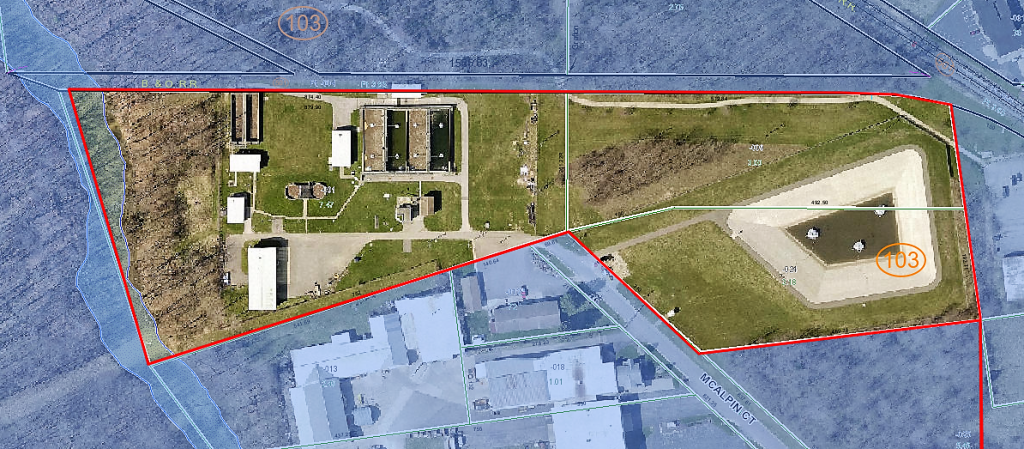SIGN UP FOR LORAIN COUNTY WENS EMERGENCY ALERTS.

It easy and keeps you up to date when weather and utility alerts are issued by local communities and when such alerts warrant countywide communication. To sign up online visit
WATER
The Grafton Water Department provides potable water service(s) to residential, commercial and industrial customers. All potable water is supplied delivered to Grafton by RLCWA. Grafton Water owns, maintains and operates;
- Water Pump Station (constructed 2018, in-service December 2018) to maintain and regulate system water pressures on demand, including any power-outage event as the Pump Station operation includes power-generation backup.
- Water storage system includes the North Tower (constructed in 1993) stores 300,000 gallons of potable water, and the Downtown District Tower (Constructed 2018, in-service December 2018) stores 200,000 of potable water.
- Water distribution system and provides fire water supply to all Village Fire Hydrants.
Service Line Inventory (SLI) from 10-14-2024
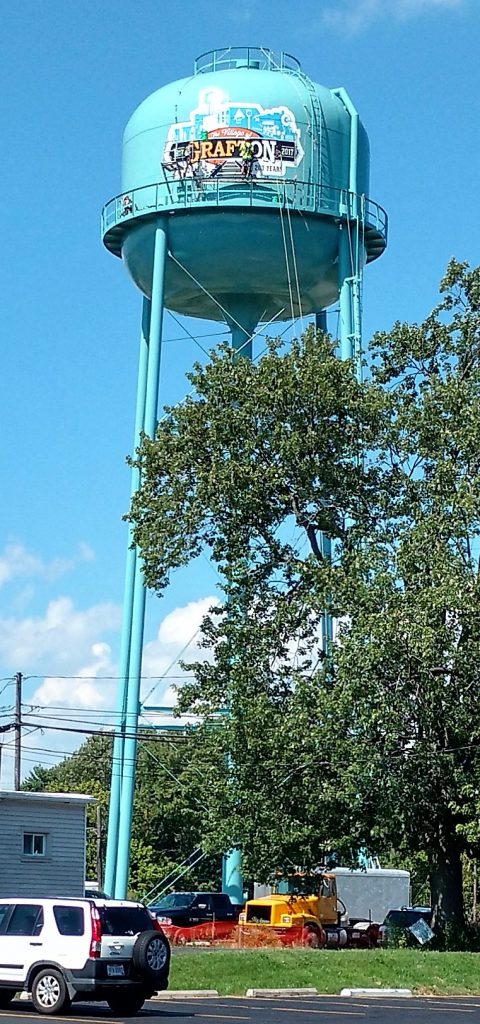

OHIO WATER BACK FLOW PREVENTION & CROSS-CONNECTION CONTROL INFORMATION
Potential water supply cross-connection concern? Any residential water customer that discovers an actual or potential cross-connection can report the cross-connection to the Village Administrator’s office.
FOX RUN SUBDIVISION WATER SERVICE PROVIDER
2024 RLCWA Water Rate Structure And Tap Fees

WASTE WATER TREATMENT & SEWER
Grafton Sewer Department is a full service sewer utility that provides a sewage transmission conduit system delivering all residential and commercial raw sewage to the Grafton Waste Water Treatment Plant for processing. Grafton Sewer owns, maintains and operates;
- Waste Water Treatment Plant (WTTP) facility, processing up to 1.5-million gallons of raw sewage daily. The Grafton WTTP is designed for future expansion to treat 2.25-millions gallons of raw sewage daily when needed. The Plant is automated and operates 24/7. The facility is maintained in-house, improvements and update occur as needed and operation improvements are planed as technology advancements in treatment become available. The Grafton WWTP is scheduled for such an improvement in 2019 with an estimated project cost in excess of 1.3-million dollars.
- Grafton sanitary sewer system. All system conduit sewers including sanitary manholes, and 4-sewage lift stations.
- 5,000,000-gallon Equalization Basin (EQ Basin). The EQ basin pulls from the sanitary sewer system raw sewage in heavy rain fall events, stores the sewage for the duration of the weather event, then pumps the sewage back into the system for treatment. Dated sewer systems often lack separation of sanitary sewage and storm water. Although current regulations now require separation to prevent heavy inflow and infiltration (I & I) of stormwater into the sanitary system during weather events, many older residential properties still have cross-connections. When an I & I event happens, some homes experienced sanitary sewage backup due to system backup from flow that exceeded the capacity of the sewer conduit system. The EQ Basin was engineered and constructed in 2014 and in service since 2015, to pull system capacity overloaded into the basin. When automatically activated sewage is pumped (sucked) from the sanitary system into the EQ Basin, stored then treated in the days following the event. This has eliminated the sanitary sewer backups, system overloads and has prevented the WWTP from being stormwater compromised during a storm event.
PUBLIC POWER – GRAFTON PUBLIC POWER & LIGHT
Grafton Power and Light is a Publicly-owned power utility. One of only 4 Public Power Communities in Lorain County, GPPL provides electric power to most residential and commercial customers within the Village of Grafton. GPPL is a member of American Municipal Power, a consortium of public power utilities that organize, develop strategic policies, address legislative impact on public power operations and costs, owns and operates power generation facilities, and purchases power from other electric power generators to assure each community with sustainable and affordable power supply. The Village of Grafton maintains a power purchase portfolio designed to supply Grafton’s electric power demand. GPPL department employs state certified electrical lineworkers, offers a state certified in-house 4-year lineman apprentice program, and all GPPL employees are represented by collective bargaining through the International Brotherhood of Electrical Workers (IBEW) Local 1377. GPPL owns, maintains and operates;
- 2 electric substations.
- Public Power electric system transmission grid, utility poles, and most power transformers.
- Roadway Street Lighting System (updated to energy efficient LED lighting 2015, 2016, and 2017).
- GRAFTON SOLAR 1 PROJECT BEACON Solar Development (1MW)
- GRAFTON 2 PROJECT BEACON Solar Development (3MW)
- December 2018, GPPL has entered into a 30-Year Power Purchase Agreement (PPA) with EITRI FOUNDRY LLC for the construction of a 4WM Solar Power Generation facility within the Village of Grafton and the purchase of low-cost RENEWABLE ENERGY and a fixed price for the full term of the PPA. EITRI FOUNDRY LLC will maintain ownership and maintenance of the Solar Power Generation Farm, located on 36 acres of Village publicly owned land, leased to EITRI FOUNDRY LLC for the term of the PPA.

The FUTURE OF PUBLIC POWER is BRIGHT with GRAFTON’s PROJECT BEACON.
4MWAC SOLAR DEVELOPMENT operational 11/30/2019
Project Developer – EIRTI FOUNDRY https://www.eitrifoundry.com/
Generation Provider – SAFARI ENERGY a PPL Company https://www.safarienergy.com/
Power System Benefactor – The Village of Grafton Power & Light
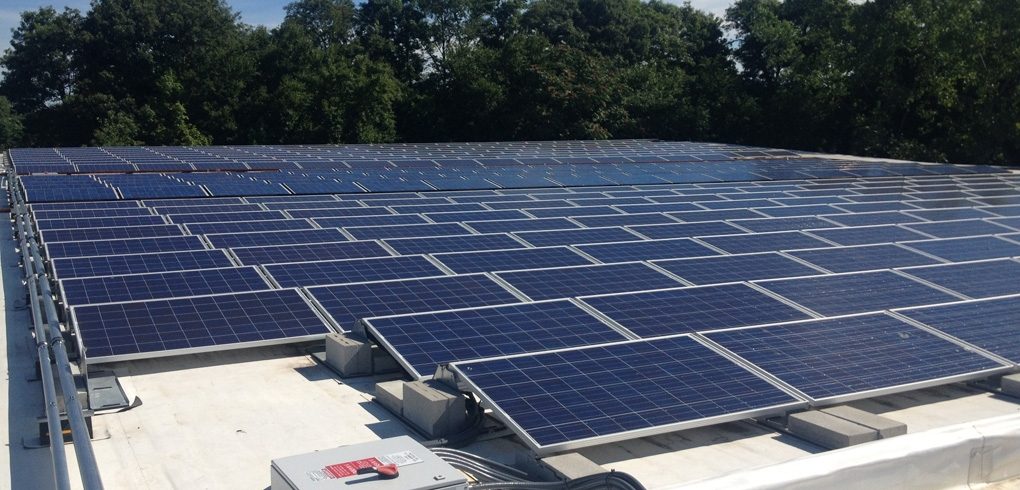
Grafton Power Supply Cost Adjustment Explanation
The Village of Grafton’s electric rates were established in 2014 at a rate of 13.29 cents per kilowatt-hour for the first 500 kWh of usage and 12.06 cents per kilowatt-hour for remaining usage. Included in that kilowatt-hour rate was an assumed purchased power cost of 7.9273 cents per kilowatt-hour.
The Power Supply Cost Adjustment line item on your electric bill reflects the amount needed to keep Grafton whole as power costs (which include costs for delivering the power across the wholesale electric grid) fluctuate.
The additional amount needed is calculated every month based on a formula established by Grafton council and codified in Ordinance Chapter 1046.02 (e). The PSCA only captures the additional costs of power and includes compensation for 10% losses through the wires and transformers across the Grafton electric distribution system.
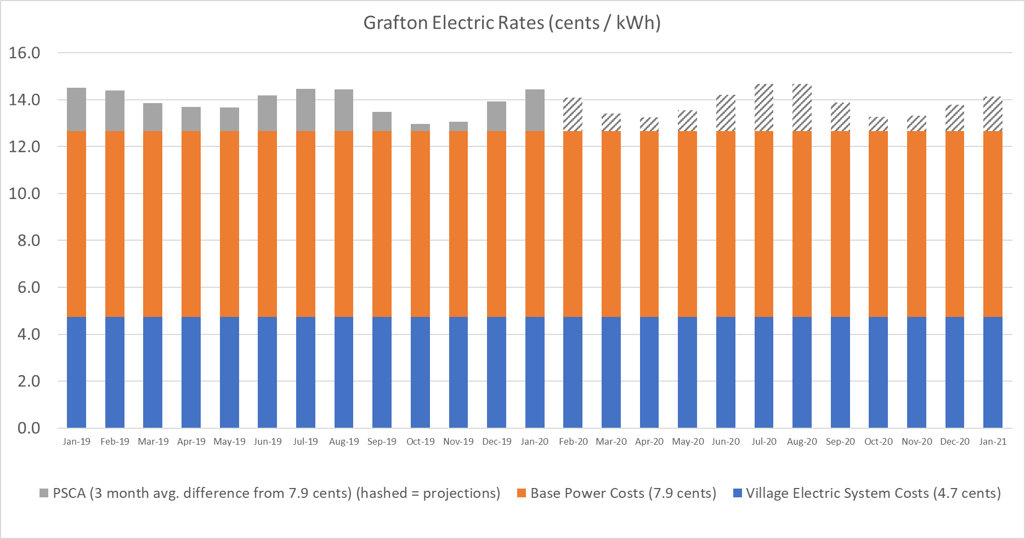
Grafton Codified Ordinance Chapter 1046. Electricity – 1046.02(e)
(e) Power Supply Cost Adjustment – Effective for bills rendered after 1/1/14.
(1) Applicability. The power supply cost adjustment set forth herein shall be applied to the total kWh billed for all electric customers, including private outdoor lighting service customers, for the meter reading period that the Village determines as most nearly corresponding to the three-month period used to determine the adjustment.
(2) Base power supply costs. The rates and charges set forth in the Village’s rate schedules are based upon the cost of the Village’s power supply requirements as furnished by American Municipal Power – Ohio. The base power supply cost included in the Village’s rate schedules is $0.079273 per kWh.
(3) Monthly determination of power supply cost adjustment. Each month the Village’s power supply cost adjustment shall be determined as follows:
- The Village’s running three-month average power supply cost per kWh shall be determined to six decimal places by dividing:
- The sum of the previous two and current months’ total power supply costs from all suppliers, plus the sum of the previous two and current months’ costs associated with ownership and operation of generating facilities owned in whole or in part by the Village, plus the sum of the previous two and current months’ transmission- related charges and AMP service fees, plus the sum of the previous two and current months’ total operating and maintenance costs associated with supplying electric distribution materials by
- The total energy delivered to the Village in the previous two months and current month.
- The base power supply cost of $0.079273 per kWh shall be subtracted from the running 12-month average power supply cost determined in division (e)(3)A. above.
- The power supply cost adjustment per kWh shall be determined by multiplying the differential in division (e)(3)B. by 1.10 to compensate for the Village’s distribution system energy losses. The result should then be rounded to the nearest 0.10 mill ($0.0001) per kWh.
What is a Power Cost Adjustment?
The Power Cost Adjustment (PCA), also referred to as the Power Supply Cost Adjustment (PSCA) is not a new charge in your Grafton utility bill. The utility customers monthly electric bill lists Electric meter beginning read, meter ending read, and the total amount of kilowatt hours (kWh) used as a base for the charge for electric cost. A second electric line using the same calculation for kWh used adjusts up or down an additional PCA charge. The PCA uses the average of the current month and two prior months’ cost.
First, the PCA is not due to a change in your electric rates. The PCA is due to changing costs of the generating and transmitting the electricity that you use. Most of your electricity is generated by coal, natural gas, wind, solar and hydro generation. The cost of fuels such as coal and natural gas changes on a monthly basis. Hydroelectricity power produced is dependent on normal water levels. When water levels are too low or too high, hydro generation is decreased requiring replacement generation from higher cost coal and or natural gas generation. Although Solar is the least costly, is only available during daylight hours and the level of generation Grafton receives is variable and dependent on the intensity of the sun each day.
The PCA charges are created when Grafton’s load exceeds the maximum levels established in Grafton’s portfolio of power purchase agreements, the periodic need for additional power when the system load exceeds Grafton power purchasing agreements, comes from coal and or natural gas power generation as both are normally the only power source that can answer the call for increased electric demand to come online relatively fast to meet the electric demand. The same is required by all electric systems and monitored 24 hours a day, seven days a week.
The PCA line item shown in your utility bill passes these periodic adjusted costs on to the electric system customers. Grafton Electric is a non-profit public utility and does not make any extra revenue from the PCA – it is a pass-through cost for cost to account for periodic higher priced power.
When Grafton electric rates were established, estimates included the cost to generate and deliver the electricity. In recent years, supply and demand issues have affected the cost of electricity generated by coal and natural gas. Additionally, the railroads have increased the costs of delivering coal to power plants through diesel-fuel adders, and natural gas prices continue to fluctuate. The rate for using the FirstEnergy transmission system to deliver power to Grafton has also risen sharply since 2014. As a result, the PCA has increased to cover theses costs.
Grafton takes action to lower costs to electric customers.
With the 2019/2020 addition of 4MWAC behind-the-meter Solar, when summer months peak loads are at their highest, Grafton Village Power & Light is able to purchase much of the needed daytimeload from solar generation located behind Grafton’s master electric meter. Every kWh Grafton receives from behind-the-meter solar will lessen the need to purchase power generated by coal and natural gas during peak load events and will at the same time lessen the PCA costs. Additionally, with every kWh of solar power purchased daily behind Grafton’s master meter Grafton customers will not include electric market transmission costs. This too will lower power costs during daytime hours (only during daytime hours).
To summarize, the PCA:
- Is not a change in electric rates.
- Does not make extra revenues for Grafton Electric.
- The PCA does account for ongoing power supply and transmission costs which is averaged over a three-month period.
- Goes up or down from month to month as and when the electric system load demand is more dependent on higher cost energy.
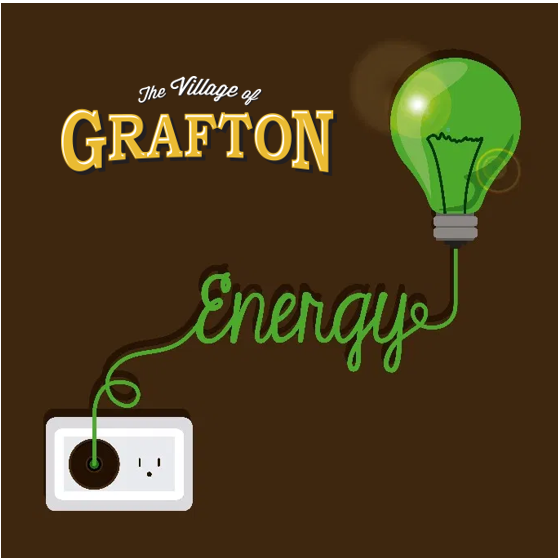
UTILITY BILLING, ACCOUNTING & AUDIT
How to identify when your Utility Billing reflects an ESTIMATED amount.
All Village of Grafton utilities (Water – Sewer – Electric) are not-for-profit public utilities and each is independently funded through the metered consumer use of utility services. Taxpayer revenues are not used to fund utility consumer services.
When possible, or when audited, and mostly when the consumer report a non-reading meter, Grafton Village Utilities works to correct the non-read condition. Regarding water this often requires department personnel access to the meter located inside the house and the ERT (Electronic Read Transmitter) outside the house. As Grafton Water is a not-for-profit water distribution system, water consumed by customers is metered and all water consumed must be billed to maintain affordable water rates for all system customers.
Every water customer has a meter that measures water through a mechanical means. The meter has a ERT (electronic read transmitter) system attached to the meter and the transmitter is located outside the home or business. Monthly readings are collected from the ERT’s for electric, water and sewer utility billing calculations through this radio transmitted meter-read utilizing drive-by data collection equipment. When the drive-by does not receive a read of either the electric meter or the water meter, the customer bill is generated using residential average use calculations to establish a minimum estimated use. Water, sewer and electric use is never the same each month with two exceptions, when the water or electricity to a residential home is disconnected or when customer is out-of-town for a duration of time and electric and water rates amount to an less than the minimum.
As water, sewer and electric use always varies each month, the amount for each utility line cost will vary each month. The operators of the drive-by read equipment do not see the constant data being collected. The utility clerk does not see the data being downloaded prior to bill generation. The automation of the system does not flag non-read meters, it processes an estimate use from system calculations as previously stated. The utility department ability to identify non-read meters relies mostly on the consumer who sees their monthly bill for water, sewer and or electric. When water, sewer and or electric t is reflecting the exact same amount each month this indicates to the customer/consumer the bill is estimated and not actual meter read. When Grafton utilities are not alerted by the consumer there is an ongoing non-read regarding their monthly billing, Grafton utilities is likely to first discover non-read meters when a system audit is performed and the prior consumed non-billed water and or electric is billed to the consumer.
Question often asked: “Can’t you just write it off?” The answer: Any system consideration to credit water or electric consumed and non-collected must be accounted for, if there were a policy that allowed for a credit, it would require system funding to offset the non-collection in the form of higher rates paid by all system customers. The Village follows the use principle and practice that each accounts pays for the water and or electric they use, not for the water and or electric others use.
When the billing system does not facilitate a report for non-read and when the consumer does not question the exact same billing amount each month, non-read meters can go undiscovered for months or until a system loss audit is performed. When audit identifies accounts that had either automated read transmission failures (the most likely find) or unlawfully disconnected meter(s).
When non-read meters are identified, all customers are billed an actual amount due. If the consumer was found to be overbilled a credit is issued. When the consumer is found to be underbilled, the prior unbilled amount is billed. Village Utility Department offers flexible payment arrangements to settle past due amounts and this assures your account remains current throughout this repayment period. No interest will be assessed to the amount identified as arears billing provided payments are made on time and no late fees will be assessed to the same utility account.
RUBBISH
The Village also contracts to have curbside rubbish and recycling pick-up. Fee for these services are billed to the consumer on a monthly basis and are due by the 25th each month. Late Fees may be assessed.
UTILIY BILLING
Utility bills can be paid either by mail or in person at Grafton Town Hall, 960 Main Street. Town Hall hours are 8:00 to 4:30 P.M. Monday through Friday. Utility bills can also be placed in an after hours drop box located at the front west corner of Town Hall.
NEW UTILITY ACCOUNT ACCESS PROGRAM
Grafton Village Utility Customers can now view utility customers can now view utility account information. Click on the link below for the Utility Connect Program to access your account information. Use that account number and billing address information from your billing address information from your utility bill to register your account.
Landlords will also be able to view the utility bills for their properties using a reference code. Landlords please contact the utility department at 440-926-1093 to obtain the necessary reference code.
Bills can also be paid by an automatic withdrawl from either your checking or savings account. Forms are available for this service. The payment will be deducted from your account on the due date of the utility bill. There is no charge for this service.
Online and Phone Payments now available with a credit card!
Online visit: https://www.officialpayments.com/index.jsp use jurisdiction code 4554.
By Phone: 1-800-2PAY-TAX use jurisdiction code 4554 (Additional provider service fees apply)
BUDGET BILLING
The village also offers the option of budget billing for qualified owners of all electric homes and special meters for outside water usage. For more information on these and other utility services, please contact the utility office.
If you have any questions, please contact the Utilities Office at 440-926-1093.
2020 Water Report – Consumer Confidence Report (CCR)
2016 RECYCLE FLYER click here
The Village does have a recycling program. Please use brown bags for yard waste disposal. The green recycle cart is to be used for other recyclable products such as tin or aluminum products, glass and plastic products and newspapers. Curbside pick-up of recycle carts is on Fridays with the regular rubbish service.
Exclusions: Laminated, foil-lined, wax-coated, soiled, or wet paper, food service paper (cups, plates, etc.), tissue paper & paper towels
For more information click on the links below.


